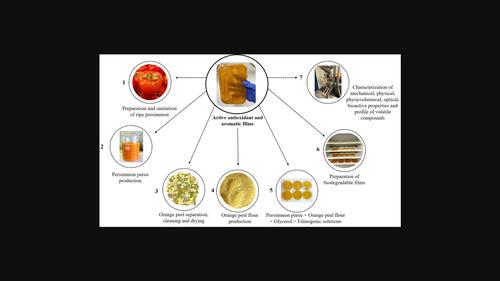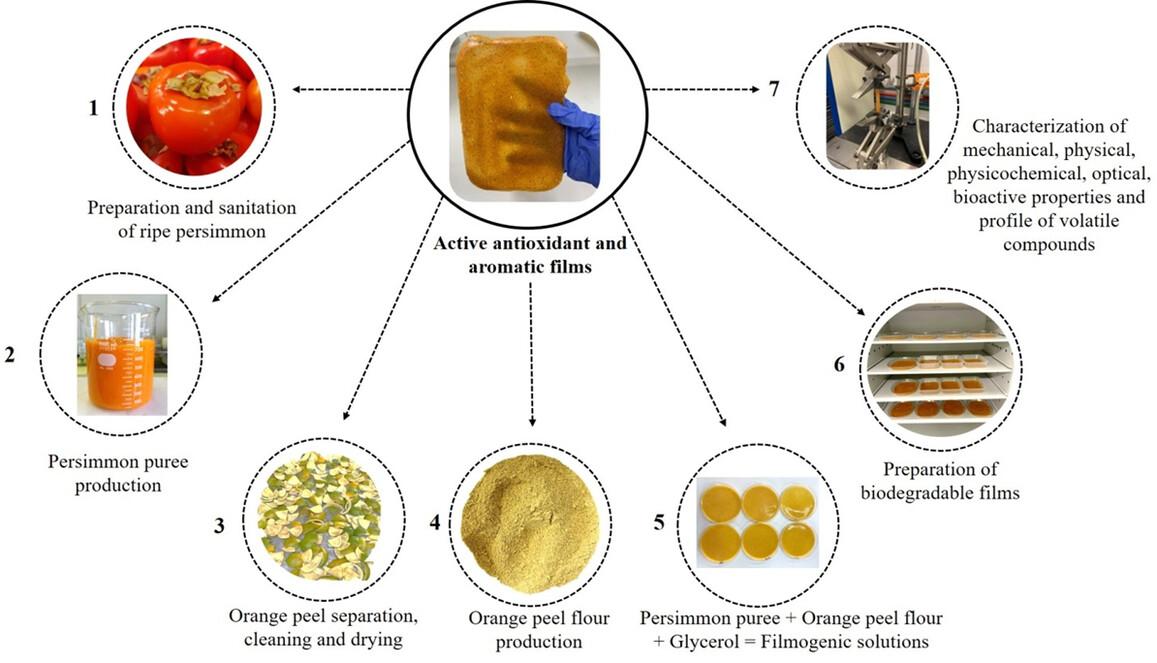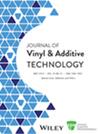Active antioxidant and aromatic films blended with persimmon (Diospyros kaki L.) and orange peel flour (Citrus sinensis) as sustainable packaging
Abstract
Active antioxidant and aromatic films based on persimmon (Diospyros kaki L.) cultivated according to agroecological precepts with orange peel flour (Citrus sinensis) and glycerol addition were developed by casting technique and characterized. The films were largely red and yellow appearance color, indicating a natural tendency to maintain the color of the persimmon pulp ripe. Scanning electron microscopy revealed a homogeneous and compact structure of the films, which obtained a rougher texture with the addition of glycerol. The addition of orange peel flour to the film-forming solution proportionally increased the total phenolic content and antioxidant capacity of the persimmon puree films. Volatile compounds belonging to different chemical classes were identified, including limonene, β-ionone, linolenic acid, palmitic acid, and vaccenic acid, which influence the overall aroma, as they were detected above their odor thresholds, and the functional properties of these films. Furthermore, the thermogravimetric analysis showed two important degradation steps related to glycerol and pectin (130–230°C) and decomposition of the polymer structure (above 300°C), guaranteeing the processability of the raw materials under conditions of higher temperatures than those normally used in industrial food packaging products in a circular economy context. This study indicates the potential for formation of persimmon-based films incorporated into orange peel flour as active antioxidant films for use in drinks and tea bags as a flavoring or as intermediate layers used between slices of cheese, avoiding direct contact with food, facilitating its separation, as some application examples.
Highlights
- Persimmon and orange peel flour films were developed by casting.
- Antioxidant and sensorial properties of blended films were evaluated.
- Volatile compounds were identified, including limonene and vaccenic acid.
- Circular economy principles were used to avoid postharvest fruit losses.



 求助内容:
求助内容: 应助结果提醒方式:
应助结果提醒方式:


